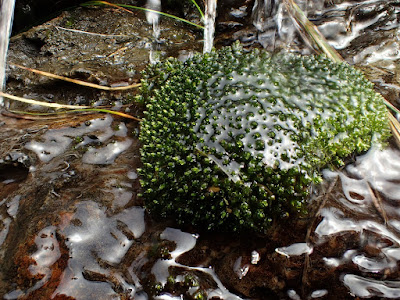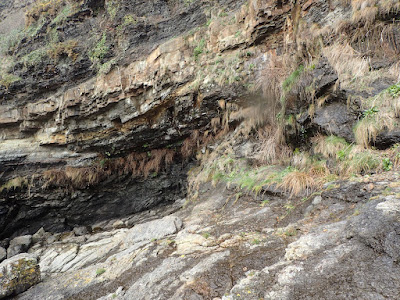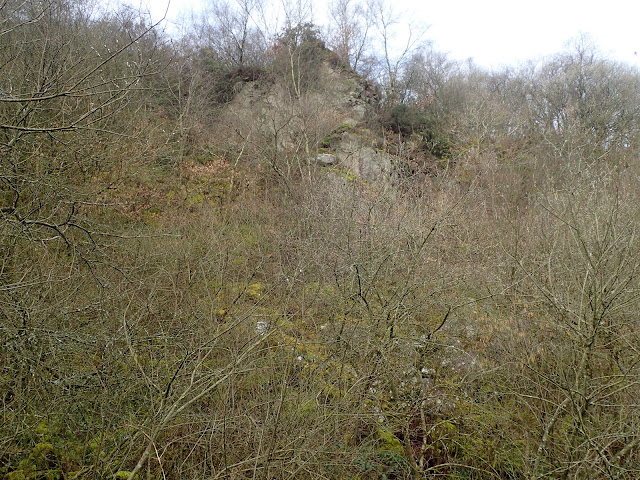Allt Clyn-Gwyn, Llangolman
In search of Atlantic woodland in Pembrokeshire, I found a spot on the map along the Eastern Cleddau south of Llangolman where the contours were steep and north-facing. It looked good as soon as I arrived. Any site with Wilson's filmy-fern is likely to have some interesting bryos, but when it's climbing the oak trees it's definitely worth a proper look.
There is a quartzite crag below an old slate quarry, and this is wooded with birch and oak, with deep mounds of Sphagnum subnitens and pleurocarps beneath old bilberry. The crag had a large population of Dicranum scottianum on the east side, which extended on to the oak trunks in places. The oaks also had Plagiochila spinulosa, and, less frequently, Plagiochila bifaria. Most strikingly, there was an abundance of Lepidozia cupressina, on the rocks, oak bases, bilberry stems and even amongst Racomitrium lanuginosum on consolidated slate waste. Clearly the largest population in the county, and good to find it after missing it at Treffgarne the other week.
 Lepidozia cupressina, growing epiphytically on oak
Lepidozia cupressina, growing epiphytically on oakAlso in abundance was Cephalozia lunulifolia, and one patch had some Kurzia trichoclados - non-fertile but fortunately with bulbils. This was first seen in the county at Coed Tycanol by Francis Rose in 1965; Sam added a couple of records more recently. Previously only recorded from Ty Canol was Scapania umbrosa, a few tiny shoots of which were on one of the many oak logs, along with Barbilophozia attenuata, Lepidozia reptans, a single small patch of Orthodontium lineare and a small amount of Odontoschisma denudatum. All in all, a successful outing to a previously unknown site to end the winter recording with.
 Wilson's Filmy-fern on oak trunk
Wilson's Filmy-fern on oak trunk
 Dicranum scottianum dominates this crag
Dicranum scottianum dominates this crag

























